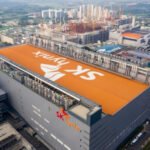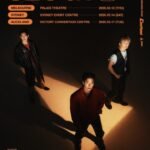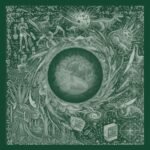LIG Nex1’s mid-range surface-to-air missile Cheongung II
Iraq has decided to import South Korean-made mid-range surface-to-air missile (M-SAM) system II, known as Cheongung II, in a deal estimated at $2.6 billion, industry sources and military media outlets reported.
According to Middle Eastern defense and security media outlets on Wednesday, the Iraqi government and South Korean defense company LIG Nex1 Co. will sign a formal contract next week.
Iraqi Defense Minister Thabet Muhammad Al-Abbasi has decided that Baghdad will soon bring eight Korean-made M-SAM II missile batteries into the country to strengthen Iraq’s air defense network, the reports said.
The batteries will be delivered on an “urgent basis,” sources said.
If a deal is signed with Iraq, it would mark the third time a Middle Eastern country has imported Korean surface-to-air missiles, following the United Arab Emirates (UAE) and Saudi Arabia.
LIG Nex1’s mid-range surface-to-air missile (M-SAM) system Cheongung II
In 2022, the UAE agreed to buy $3.5 billion worth of the Cheongung II batteries. Abu Dhabi was the first overseas customer of the M-SAM.
Saudi Arabia signed a $3.2 billion deal with an LIG-led consortium for the Korean M-SAM II system in February.
IRAQI MINISTER VISITED SEOUL IN MARCH
In March, Baghdad sent military and technical delegations to several countries to explore air defense options, including anti-aircraft weapons.
At the time, Iraqi Defense Minister Al-Abbasi met Korean military officials in Seoul and inquired about acquiring three Cheongung II batteries, and Korean defense companies responded that they could deliver two batteries initially, sources said.
LIG Nex1’s mid-range surface-to-air missile
LIG Nex1 is the main contractor of the air defense system, working in close partnership with other Korean companies.
While LIG Nex1 manufactures missiles and integrated systems, Hanwha Systems Co. produces the radar and Hanwha Aerospace Co. makes the launchers and vehicles.
The multibillion-dollar contracts with Middle Eastern countries solidify Cheongung’s position as one of the most successful Korean defense products alongside the K9 artillery system.
HIT-TO-KILL TECHNOLOGY
The M-SAM, known as Cheongung, meaning heaven’s bow in Korean, employs “hit-to-kill” technology in which the kill vehicle intercepts incoming threats such as hostile aircraft, cruise missiles and ballistic missiles by colliding with them.
The air defense system features cutting-edge radar for simultaneous detection and tracking of multiple targets.
Hanwha Systems’ multi-function radar (MFR) system used in Cheongung II missiles
A battery consists of Hanwha Systems’ mobile multi-function radar (MFR), a command post vehicle made by Kia Corp. and typically four launchers, each carrying eight vertically launched missiles in canisters.
The system is designed to intercept targets at a range of 40 kilometers (25 miles) at altitudes up to 15 kilometers, lower than US Patriot PAC-3’s 20 km.
However, a Cheongung missile costs around 1.5 billion won ($1.1 million) – one-third the price of a Patriot missile.
During a 2017 test launch, Cheongung demonstrated a 100% accuracy rate, according to military officials.
The system was designed and developed by the state-run Agency for Defense Development (ADD).
The LIG-led consortium began mass production in 2018. The first batch was delivered to the South Korean military in November 2020. Currently, Cheongung is a core weapons system for the (South) Korea Air and Missile Defense (KAMD) system against North Korea.
By Hyeon-woo Oh
ohw@hankyung.com
In-Soo Nam edited this article.















